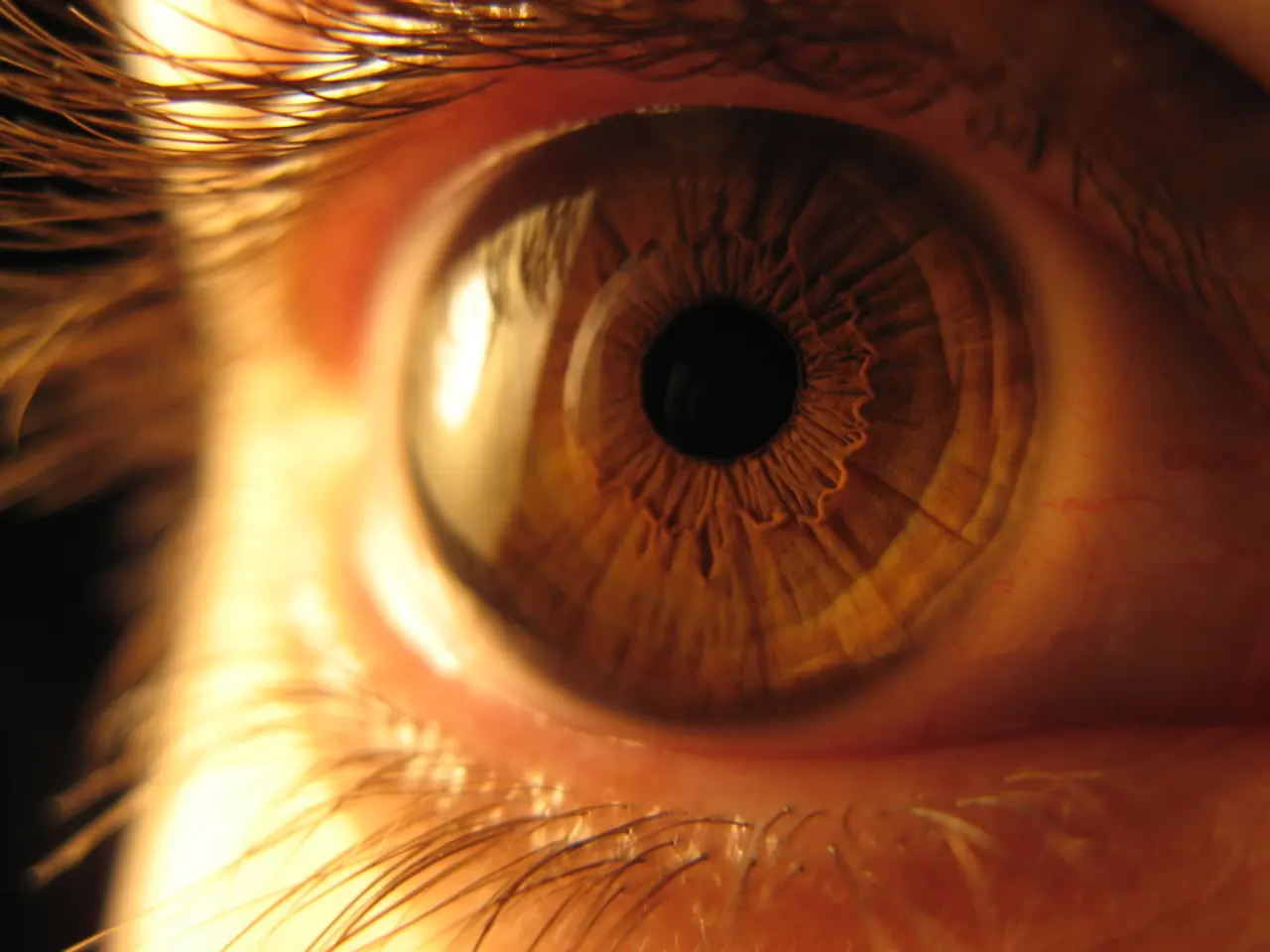Cosmetic Procedure for Sagging Eyelids: Blepharoplasty Overview
Blepharoplasty, a surgical procedure that aims to rejuvenate the eyes by removing excess skin, muscles, and fat, typically requires a recovery period of approximately two weeks. This article provides an overview of the recovery timeline, post-surgery care instructions, and return-to-work guidelines for patients undergoing Blepharoplasty.
Recovery Timeline
The recovery process for Blepharoplasty can be divided into several stages:
- First 48 hours: Patients should rest quietly with their head elevated and apply cold compresses intermittently to reduce swelling. A liquid diet is recommended for the first 12 hours, and Tylenol can be used for minor pain.
- First week: Swelling and bruising around the eyes are expected, with about 70% of swelling reducing in this period. Patients should avoid strenuous activities and heavy lifting, and most can return to work by Day 7. Stitches are usually removed on Day 5 or Day 7.
- Second week: Bruising and swelling mostly subside, allowing patients to comfortably return to work and social activities. Vigorous exercise should still be avoided.
- One month: Significant improvement in appearance is observed, with incision lines fading and maturing. Minor puffiness may persist, especially in the mornings, but most patients see refreshed, youthful eyelids by this point.
- Long-term (2-3 months or more): Complete healing and final refinement continue for several months, with scars fading into natural creases and tissues settling into their final position.
Post-Surgery Care Instructions
During recovery, it is essential to follow the surgeon's instructions for wound care, medication, and pain management. Key post-surgery care instructions include:
- Keeping the head elevated to reduce swelling.
- Using cold compresses during the initial 48 hours to minimize bruising and swelling.
- Adhering to the surgeon’s guidelines on wound care and medication, including pain management with Tylenol.
- Avoiding strenuous activities and heavy lifting for at least two weeks.
- Attending all follow-up appointments to monitor healing and have stitches removed.
- Protecting the eyes from sun and avoiding rubbing them until fully healed.
- Avoiding vigorous exercise for at least two weeks, typically resuming most physical activities after week 2.
Return to Work
Most patients feel ready to return to work within about 7 days after surgery, especially if the work is not physically demanding or stressful to the eyes. By two weeks, many resume normal social and physical activities comfortably.
The recovery experience varies per individual, depending on factors like age, skin type, and adherence to care instructions. However, patient satisfaction is generally high, with a natural and refreshed appearance emerging after full recovery.
Essential Preparations
Before the Blepharoplasty surgery, patients should:
- Arrange for someone to transport them home and watch over them for several hours after the procedure's release from the clinic.
- Stop taking medication that thins the blood and prevents clotting normally one to two weeks before the procedure.
- Smoking should be stopped at least two weeks prior to the Blepharoplasty procedure.
- A light meal such as soup should be eaten the evening before the surgery, and nothing should be consumed after midnight.
- Incisions for Blepharoplasty are made in the natural folds of the eyelid, making them virtually unnoticeable after healing.
Dr. Rajat Gupta, a board-certified plastic surgeon in India with 15 years of experience, specializes in Blepharoplasty. The procedure can be performed on the upper eyelids, lower eyelids, or both at the same time. Before the surgery, local or general anesthesia will be administered, with general anesthesia being used for more complex procedures or when combined with other cosmetic procedures.
For appointments with Dr. Rajat Gupta, call 91-9251711711 or email contact@our website.
- The plastic surgery procedure, Blepharoplasty, is a cosmetic aesthetic procedure that focuses on rejuvenating the eyes by removing excess skin, muscles, and fat, and it is often associated with the science of health-and-wellness and skin-care.
- As part of the recovery timeline for Blepharoplasty, patients are advised to expect swelling and bruising around the eyes during the first week, and they should avoid vigorous exercise and heavy lifting during this recovery period.
- Mental health is crucial for patients during the recovery process, as they need to adhere to post-surgery care instructions such as keeping their head elevated and using cold compresses to minimize swelling.
- Blepharoplasty procedure can be part of a holistic approach to health-and-wellness, which includes fitness-and-exercise, mental-health support, and effective skin-care practices.




